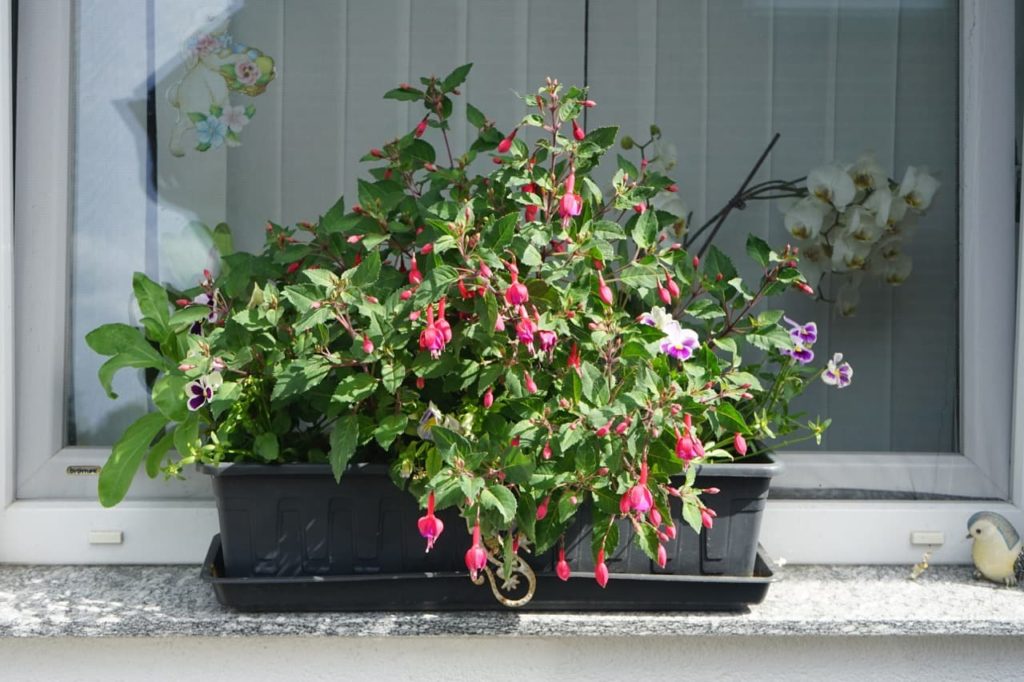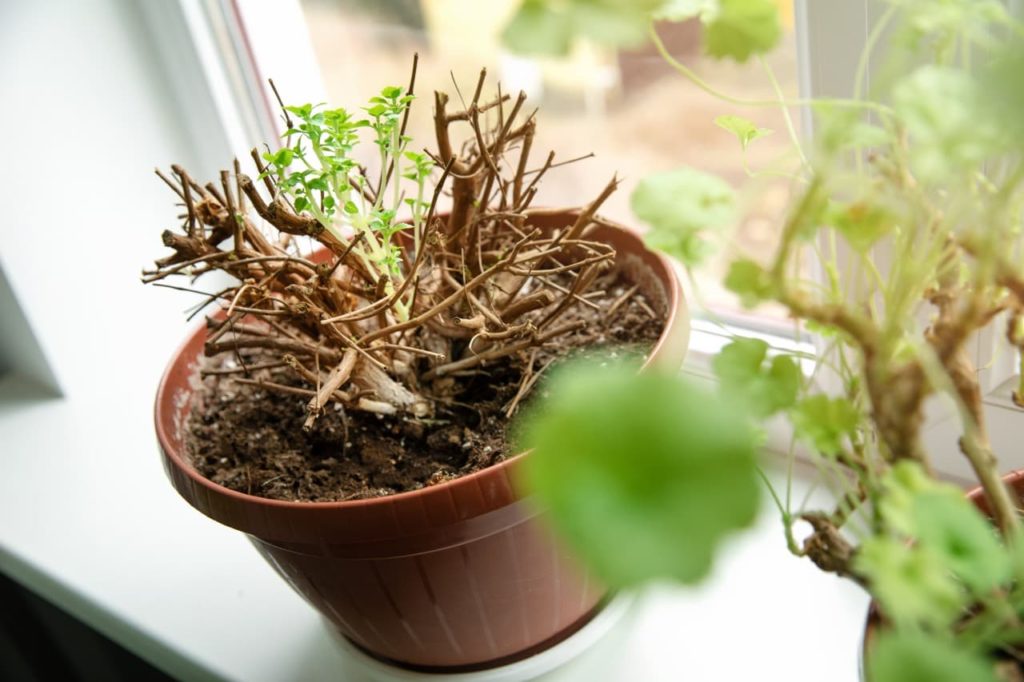Tender Fuchsia (H1-H3 Rated) Will Need Overwintering: Follow These 6 Steps

SHRUBS > FUCHSIA > OVERWINTERING
Reviewed By COLIN SKELLY

Colin is a Horticulturist and Horticultural Consultant with experience in a range of practical and managerial roles across heritage, commercial and public horticulture. He holds the Royal Horticultural Society’s Master of Horticulture award and has a particular interest in horticultural ecology and naturalistic planting for habitat and climate resilience.
IN THIS GUIDE
FUCHSIA GUIDES
Container Growing
Hanging Baskets
Hardy
Overwintering
Problems
Propagation
Pruning
Sowing
Varieties
Fabulous fuchsias come in more sizes, shapes and everything else than you can shake a stick at.
That ‘everything else’ includes hardiness ratings, as varieties range in hardiness all the way from H1 to H6.
Fuchsias are perennials, whether they are deciduous or semi-evergreen, so you’ll want to keep that lovely plant well-nursed during the winter so you can enjoy the riotous medley of colour it will display as early as spring.
Although fuchsias need climatic conditions to be in their own comfort zone more than most flowering plants, overwintering them to keep them in that zone is a fairly straightforward process, as indicated by the following steps:
- Grow tender varieties (H1-H3 rated fuchsia) in containers.
- Bring the containers indoors when temperatures drop (at least before the first frost).
- Cut back the plant to its main stems.
- Tuck the plant away in the right spot.
- Maintain these conditions during winter, watering irregularly to keep the roots moist but not waterlogged.
- Move outdoors following the last frost.
The entire process is explained in more depth below.
| Difficulty | Easy |
| Equipment Required | Gardening gloves and secateurs |
1) Grow Tender Varieties In Containers
Avoid planting H1-H3 fuchsia varieties in open ground in the UK, as you will most likely lose them in the winter if you do so.

Of course, if you have a conservatory then you’re all set. Grow these varieties in containers, including hanging baskets.
2) Bring The Pot-Grown Fuchsias Indoors
After the blooming season has ended and before the first frost, shift your fuchsia container indoors.
This should be done gradually in the process of reverse hardening.

Bring the container indoors for a couple of hours for one or two days, then for several hours for one or two days, and so on.
This does not need to be an extended process; four or five times is quite enough.
Initially, place the container on or by a window where it will get some morning sunlight or filtered sunlight in the afternoon.
3) Cut Back The Plant
This step should be taken only if you do not intend to prune in spring.
If you have a standard fuchsia, be it a mini standard, full standard or anything in between, cut it back to just leave 8-16cm of the main stem.

If you have a more typical multi-stemmed plant in a pot or hanging basket, trim it so that all the stems are between 8-16cm from the soil.
Not only will the plants produce fresh growth from the trimmed stems in spring, but this step will also assist the plants in transitioning to dormancy for the winter.
Do not prune the plants again in spring.
4) Tuck The Plant Away In A Suitable Spot
Place the container somewhere that is cool and dark and well-ventilated.
A shed or basement with a window or ventilator should work well.
The temperature should stay between 5-8°C.
“I keep my fuchsias over winter in a cold greenhouse which suffices for most of the winter,” says Colin Skelly, a Master Horticulturist.
“When temperatures drop towards freezing, I lay horticultural fleece over the fuchsias to prevent frost damage, adding an extra layer of fleece in very cold weather.”
Be sure that the room is not overly dry and an unheated room is preferable, so long as the temperature is in the aforementioned range.
5) Maintain Throughout The Winter
The plant needs to be watered but in moderation and infrequently.
The aim is that the roots stay hydrated and do not dry out.
A moisture meter will be helpful or you can try pushing a finger into the soil to give you an excellent indication as to whether it is time to water.
Typically, watering every fortnight should suffice.

The volume of water should be just enough to make the soil moist all through.
In spring, the plant should be relocated to a spot where it gets filtered or indirect sunlight in the morning.
As soon as you see fresh growth emerging, gradually increase the frequency of watering and the volume of water.
After the last frost, the plant may be shifted outdoors, though it should be hardened off gradually.

